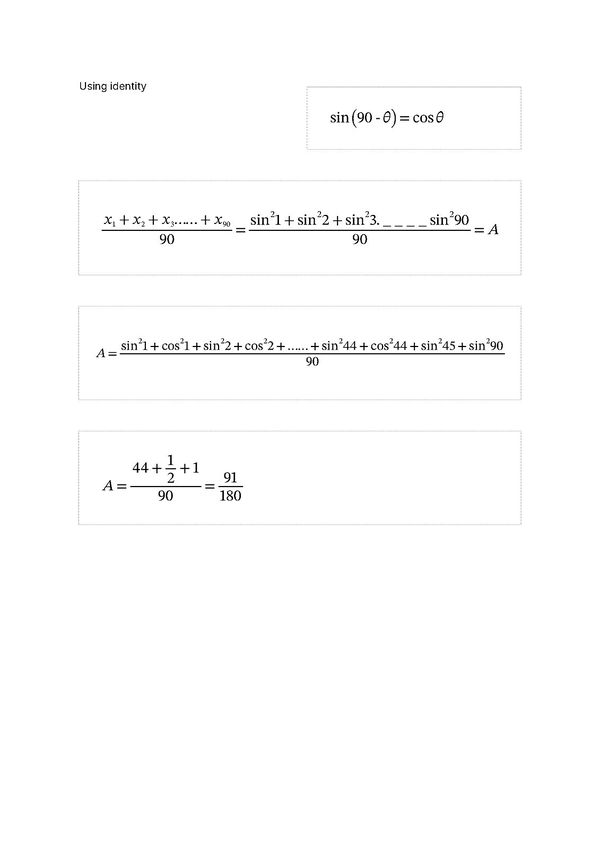Difference between revisions of "2024 AMC 12B Problems/Problem 11"
(→Solution 3) |
Numerophile (talk | contribs) (→Solution 3) |
||
| Line 22: | Line 22: | ||
[[Image: 2024_AMC_12B_P11.jpeg|thumb|center|600px|]] | [[Image: 2024_AMC_12B_P11.jpeg|thumb|center|600px|]] | ||
~Kathan | ~Kathan | ||
| + | |||
| + | ==See also== | ||
| + | {{AMC12 box|year=2024|ab=B|num-b=10|num-a=12}} | ||
| + | {{MAA Notice}} | ||
Revision as of 14:19, 14 November 2024
Problem
Let ![]() . What is the mean of
. What is the mean of ![]() ?
?
![]()
Solution 1
Add up ![]() with
with ![]() ,
, ![]() with
with ![]() , and
, and ![]() with
with ![]() . Notice
. Notice
![]() by the Pythagorean identity. Since we can pair up
by the Pythagorean identity. Since we can pair up ![]() with
with ![]() and keep going until
and keep going until ![]() with
with ![]() , we get
, we get
![]() Hence the mean is
Hence the mean is ![]()
~kafuu_chino
Solution 2
We can add a term ![]() into the list, and the total sum of the terms won't be affected since
into the list, and the total sum of the terms won't be affected since ![]() . Once
. Once ![]() is added into the list, the average of the
is added into the list, the average of the ![]() terms is clearly
terms is clearly ![]() . Hence the total sum of the terms is
. Hence the total sum of the terms is ![]() . To get the average of the original
. To get the average of the original ![]() , we merely divide by
, we merely divide by ![]() to get
to get ![]() . Hence the mean is
. Hence the mean is ![]()
~tsun26
Solution 3
~Kathan
See also
| 2024 AMC 12B (Problems • Answer Key • Resources) | |
| Preceded by Problem 10 |
Followed by Problem 12 |
| 1 • 2 • 3 • 4 • 5 • 6 • 7 • 8 • 9 • 10 • 11 • 12 • 13 • 14 • 15 • 16 • 17 • 18 • 19 • 20 • 21 • 22 • 23 • 24 • 25 | |
| All AMC 12 Problems and Solutions | |
The problems on this page are copyrighted by the Mathematical Association of America's American Mathematics Competitions. 










